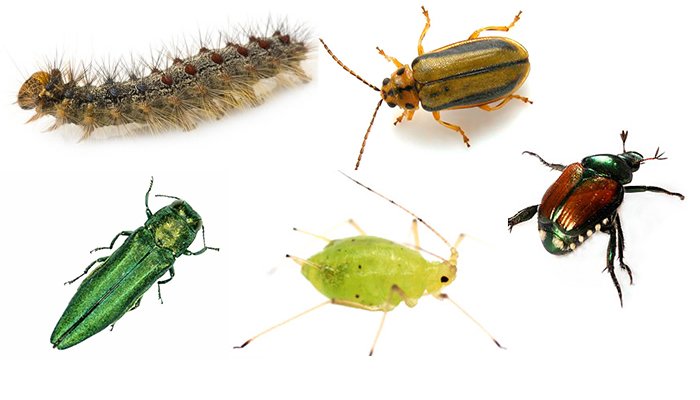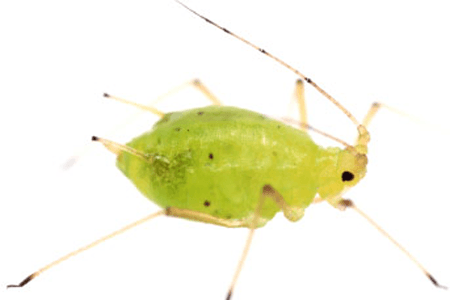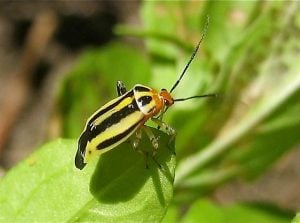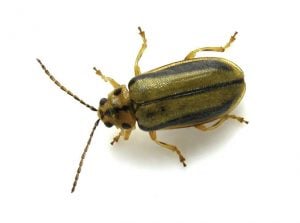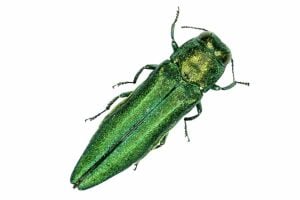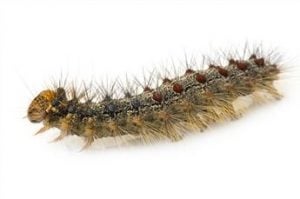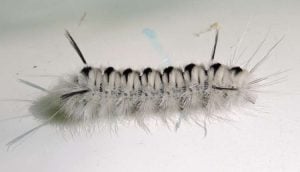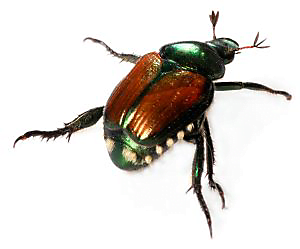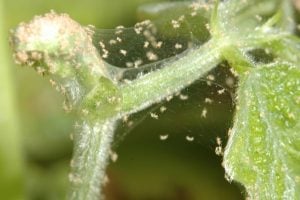Identifying and being able to decipher the difference between insects you spot on your trees is not always easy, but it is important. Proper insect identification is often challenging because different pests can cause similar damages to your trees, and certain insects may resemble each other. Properly identifying the type of tree that they are seen on and/or are causing damages to is a great way to differentiate amongst similar tree pests, and is often the first step in insect identification.
INSECT IDENTIFICATION GUIDE FOR COMMOM TREE PESTS YOU MAY FIND IN YOUR YARD:
Aphids –
What are they?
Sap suckers with over 4000 species found in the world.
Aphids are small, pear-shaped, with two whip-like antennae at the tip of their heads. Depending on the species, they can be green, yellow, brown, red, or black. They also have tube-like cornicles projecting from their back side.
What trees do the damage?
Aphids can typically be found feeding on young, tender growth. Specifically, vegetable gardens, zinnias, roses, coreopsis, and fruit trees.
What damages do they cause?
By sucking juices out of leaves, stems, and roots, aphids deprive plants of nutrients they need to survive.
What’s the best treatment?
Biological, mechanical, and cultural control methods are typically used to treat aphid infestations and IPM (integrated pest management) is the most effective technique.
Ash Plant Bug –
What are they?
Plant bugs found throughout the U.S.
Ash plant bugs are ¼ inch long with slender bodies that are typically green to light brown. They have a distinctive yellow triangular spot in the middle of their back.
What trees do the damage?
Ash bug plants typically feed on the leaves of ash plants.
What damages do they cause?
Puncture wounds from these bugs can be found on the upper surface of the leaves (look like white speckles). This could cause leaves to drop prematurely.
What’s the best treatment?
Damage is usually minor with ash plant bugs, and because of this, treatment is often not necessary. However, proactive pest management is always the best technique in preventing any sort of pest infestation.
Elm Leaf Beetle –
What are they?
Common Insects found on elm trees.
Elm leaf beetles are ¼ inch long olive green beetles with black, longitudinal stripes along the center of their backs.
What trees do the damage?
The elm leaf beetle chews on elm tree leaves.
What damages do they cause?
By chewing on the underside of leaves on elm trees, a type of injury pattern is produced know as skeletonizing. Leaves with damages from this beetle will typically resemble lace.
What’s the best treatment?
Spraying your trees, especially in areas where these outbreaks typically occur, is a good control method for dealing with these pests.
Emerald Ash Borer –
What are they?
Exotic beetle native to northeastern Asia.
Emerald ash borers are small, metallic green beetles about the size of a cooked grain of rice.
What trees do the damage?
Emerald ash borers are very damaging to ash trees.
What damages do they cause?
When outside of its native range, the ash borer is devastating to ash trees. By boring into the trees and feeding on their tissue beneath its bark, the movement of nutrients and water within the tree is disrupted.
What’s the best treatment?
Spraying insecticides on susceptible and valuable ornamentals is a great preventative method. The best option if ash borers are found on your property is to destroy affected material quickly to avoid spreading of this pest.
READ MORE ON EMERALD ASH BORER
Gypsy Moth Caterpillar –
What are they?
An invasive species introduced into Massachusetts in 1869.
The Gypsy moth is a grayish, furry caterpillar with distinct blue and red raised nodules running through its back.
What trees do the damage?
They typically prefer to feast on hardwood trees like apple, oak, alder, willow, etc.
What damages do they cause?
Gypsy moth infestations and feastings cause defoliation that can lead to tree stress and/or possibly death. In their caterpillar stage, they can consume tremendous amounts of leaf material.
What’s the best treatment?
A proactive approach and plant health care plan for preventing infestations is key. Spraying control applications is also helpful in controlling gypsy moth caterpillars.
READ MORE ON GYPSY MOTH CATERPILLARS
Hickory Tussock Moth Caterpillar –
What are they?
A caterpillar species that originated in Canada.
A black and white caterpillar with a furry appearance.
What trees do the damage?
These black and white caterpillars typically feed on hickory, walnut, ash, elm, and oak trees.
What damages do they cause?
Feeding on trees can cause some defoliation, but additionally, this caterpillar can cause irritation and reactions to skin if touched. The black-tipped bristles contain an irritant that can lead to itchiness and allergic reactions.
What’s the best treatment?
IPM is the best approach when dealing with frustrating pests. With IPM, treatment will only be performed when necessary, and if a pest is not causing much damage or cause for alarm, we will not treat the area of kill the pest.
READ MORE ON HICKORY TUSSOCK MOTH CATERPILLAR
Japanese Beetle –
What are they?
A species of scarab beetle of southwestern Unites Stares, and Mexico.
They are about 15 mm long, and 10 mm wide with a green thorax and head, and iridescent copper-colored elytra.
What trees do the damage?
Rose bushes, grapes, hops, crape myrtles, birch trees, lindens, etc.
What damages do they cause?
Adult beetles will also cause skeletonizing to plant foliage by consuming the leaf material between the veins. Larvae will feed on roots of grasses.
What’s the best treatment?
A proactive approach and plant health care plan for preventing infestations is key.
Spider Mites –
What are they?
Spider mites are classed as a type of arachnid relative to spiders, ticks, and scorpions.
Adults are reddish brown or pale in color and they have an oval-shaped body that is 1/50 inches long.
What trees do the damage?
Spider mites feed on vegetable crops, and ornamentals.
What damages do they cause?
By sucking material from plant cells, these mites cause visible damages, even though they themselves are hard to spot since they are so small. On ornamentals, mites cause mostly aesthetic damages, but on vegetable garden and crops such as peas and beans, mites will cause direct damages.
What’s the best treatment?
Natural and organic methods of control are the most effective for treating spider mites because chemical pesticides actually encourage the spread of mites by killing the beneficial insects that prey on them.
An insect identifier like this can help to properly identify or differentiate between common pests on your property. However, when dealing with pest control, proper diagnosis is key and trusting the professionals will produce the most accurate results. IPM is a great way to proactively manage pests on your property and to ensure that if a problem does arise, the proper treatment will be implemented early to help with recovery and decrease the chances of spreading. Contact Red Cedar today for your free plant health care and integrated pest management consultation!


